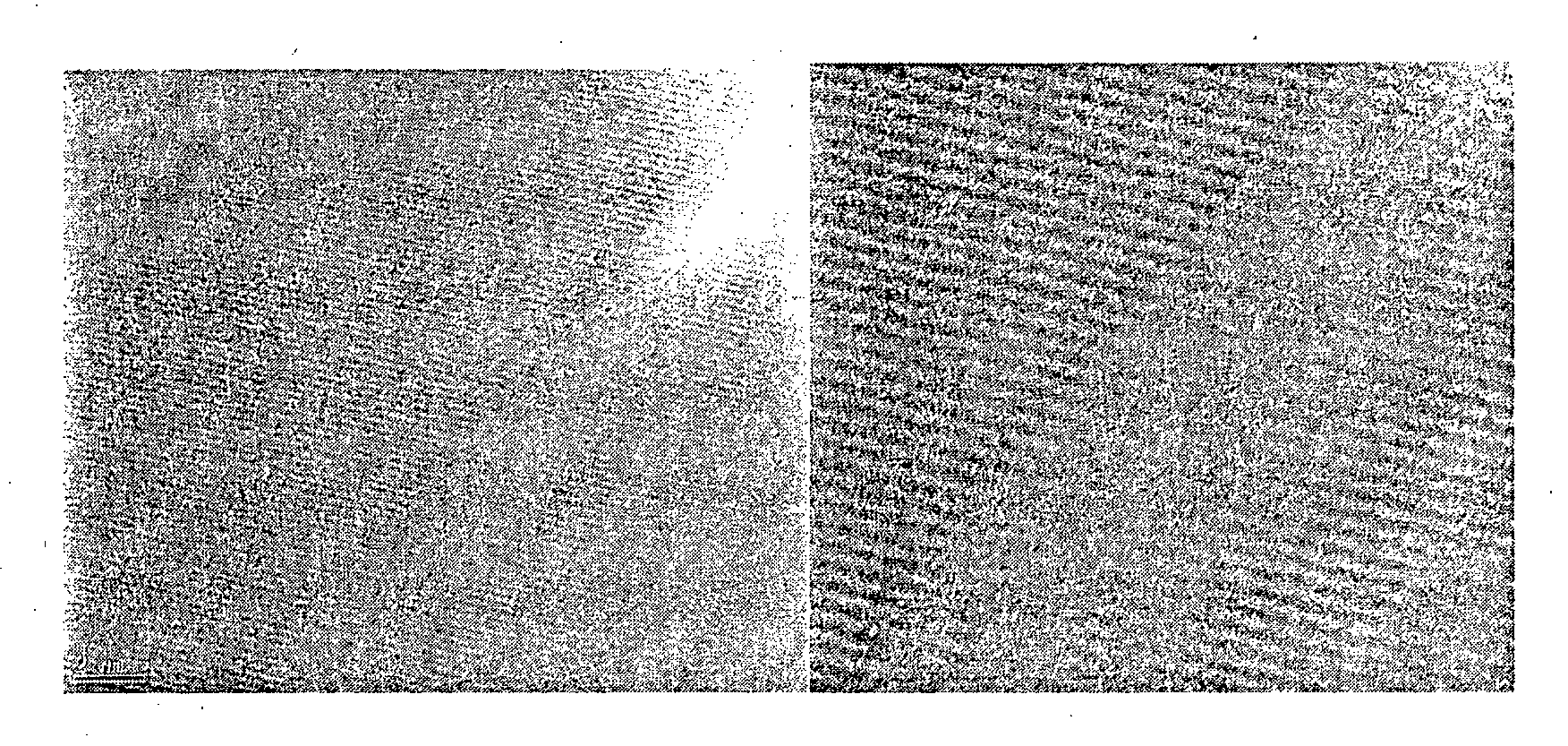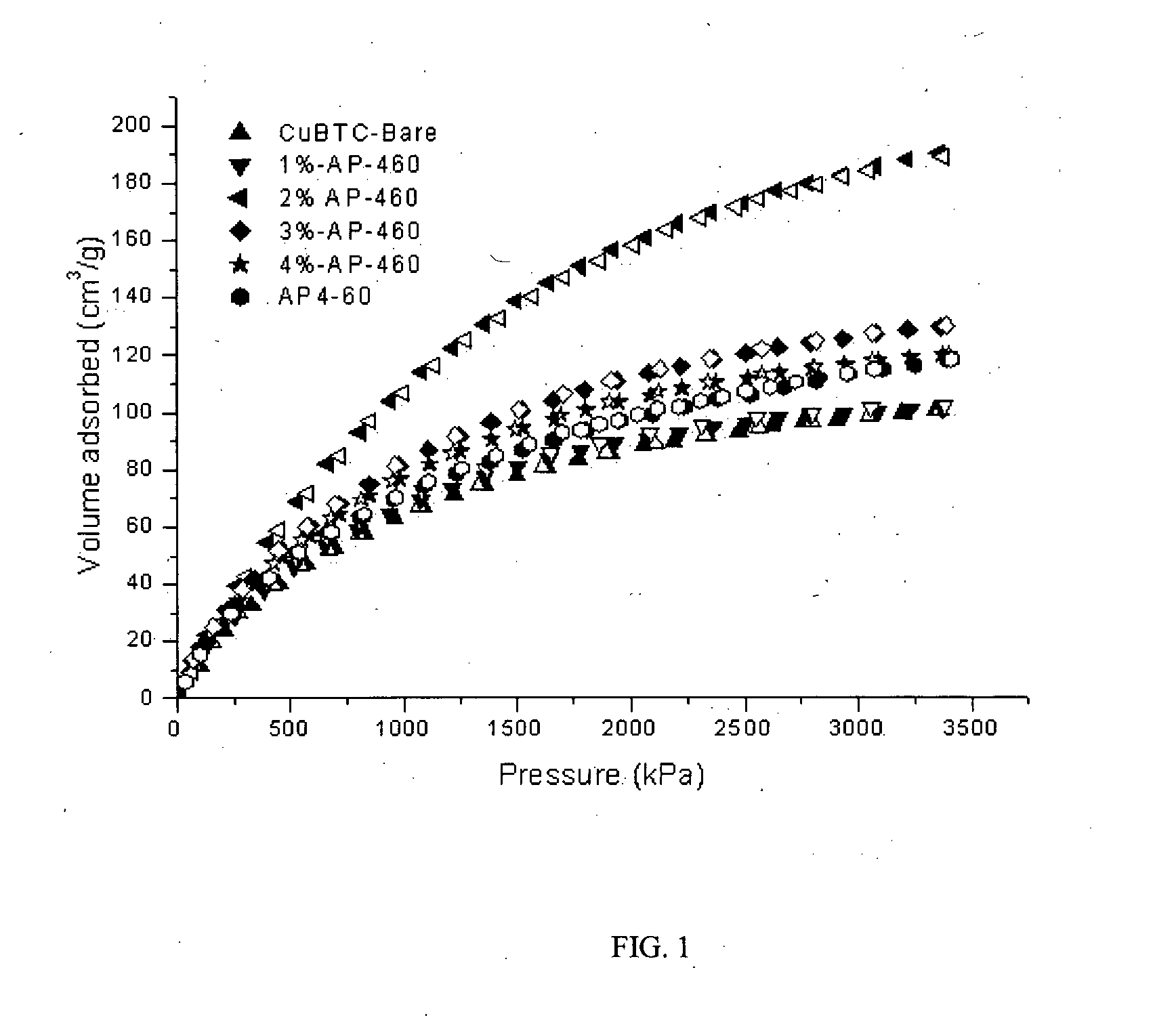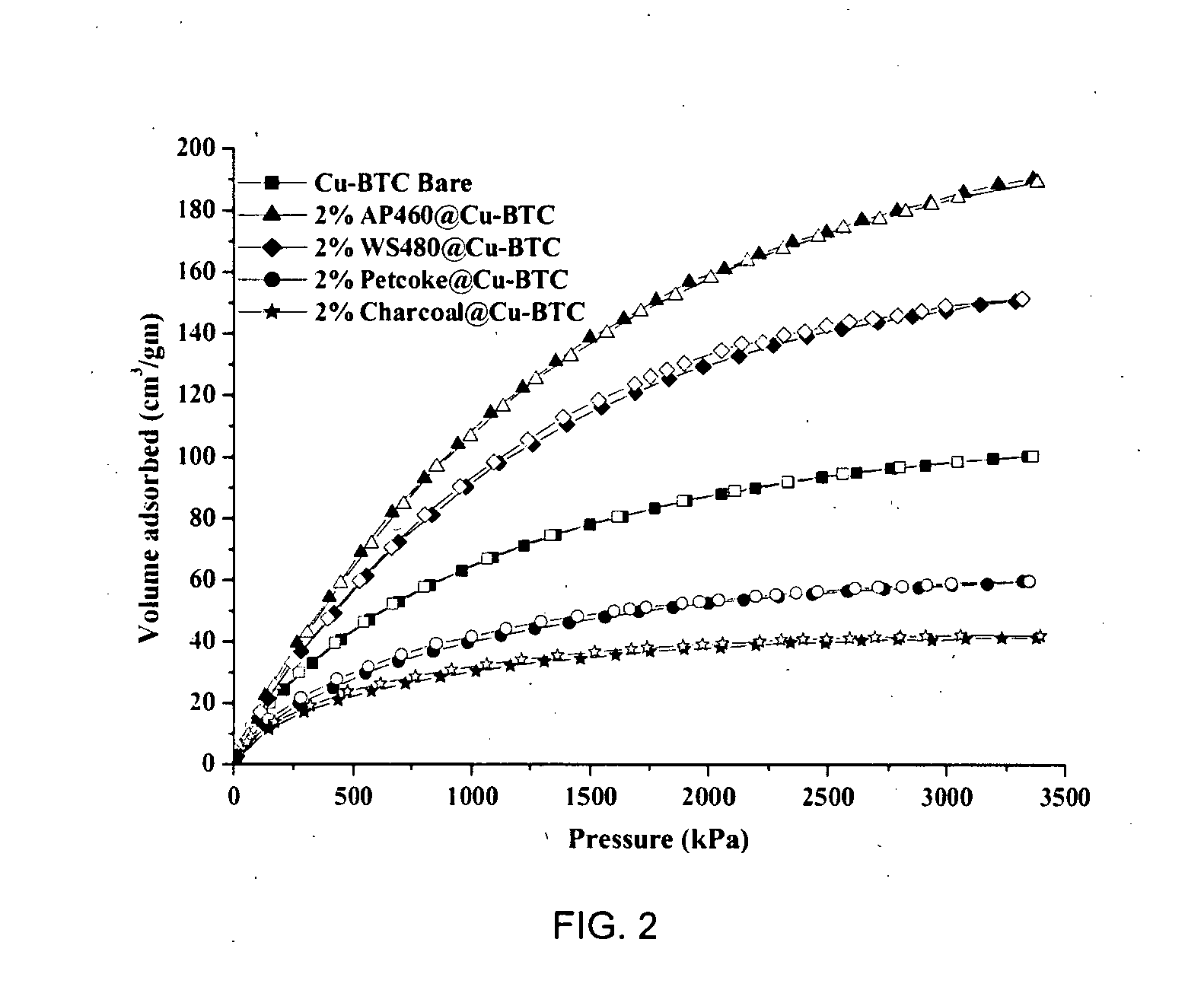Activated carbon-metal organic framework composite materials with enhanced gas adsorption capacity and process for the preparation thereof
a technology of carbon-metal organic framework and composite materials, which is applied in the preparation of carboxylic compounds, other chemical processes, mechanical instruments, etc., can solve the problems of less amount of material in a fixed volume and the use of cng
- Summary
- Abstract
- Description
- Claims
- Application Information
AI Technical Summary
Benefits of technology
Problems solved by technology
Method used
Image
Examples
example 1
Preparation of “CuBTC-Bare”:
[0043]Cu-BTC is synthesized by an improved process reported by Qing Min Wang, et al.[Qing Min Wang, Dongmin Shen, Martin Bülow, Miu Ling Lau, Shuguang Deng, Frank R. Fitch, Norberto O. Lemcoff, Jessica Semanscin, Microporous and Mesoporous Materials 55 (2002) 217-230]. The recipe is as follows.
[0044]Benzene-1,3,5-tricarboxylic acid (49.1 g, 0.234 mol) was dissolved into ethanol (250 ml), and cupric nitrate hydrate (Cu(NO3)2.3.0H2O; 108.6 g, 0.466 mol) was dissolved into water (250 ml). The two solutions were mixed at ambient temperature (300K) for 30 min, and the mixture was transferred into an autoclave. The autoclave was heated at temperature, 393K, under hydrothermal conditions for 18 h. The reaction vessel was cooled to ambient temperature (300K), and blue crystals of Cu-BTC were isolated by filtration, and washed with water. The product was dried at 383 K, overnight. The yield was quantitative (90 g). The compound has been formulated as [Cu3(BTC)2-(H...
example 2
Preparation of 1% AP-460@CuBTC:
[0045]Benzene-1,3,5-tricarboxylic acid (24.55 g, 0.117 mol) was dissolved into ethanol (125 ml), and cupric nitrate hydrate (Cu(NO3)2.3.0H2O; 54.3 g, 0.233 mol) was dissolved into water (125 ml). The two solutions were mixed at ambient temperature (300K) for 30 min, and the mixture was transferred into an autoclave. Commercially available activated carbon AP4-60 (Chemviron) (0.375 g) was added in to the reaction mixture and mixed properly. The autoclave was heated at temperature, 393 K under hydrothermal conditions for 18 h. The reaction vessel was cooled to ambient temperature (300K), and blackish blue crystals were isolated by filtration, and washed with water. The product was dried at 383 K, overnight. The yield was quantitative (48 g). The product was designated as “1% AP-460@CuBTC”. The methane adsorption capacity of this sample is 100.8 cm3 / g (Table 1).
example 3
Preparation of 2% AP-460@CuBTC:
[0046]Benzene-1,3,5-tricarboxylic acid (24.55 g, 0.117 mol) was dissolved into ethanol (125 ml), and cupric nitrate hydrate (Cu(NO3)2.3.0H2O; 54.3 g, 0.233 mol) was dissolved into water (125 ml). The two solutions were mixed at ambient temperature (300K) for 30 min, and the mixture was transferred into an autoclave. Commercially available activated carbon AP4-60 (Chemviron) (0.75 g) was added in to the reaction mixture and mixed properly. The autoclave was heated at temperature, 393 K under hydrothermal conditions for 18 h. The reaction vessel was cooled to ambient temperature (300K), and blackish blue crystals were isolated by filtration, and washed with water. The product was dried at 383 K, overnight. The yield was quantitative (50 g). The product was designated as “2% AP-460@CuBTC”.The methane adsorption capacity of this sample is 190.3 cm3 / g (Table 1).
PUM
| Property | Measurement | Unit |
|---|---|---|
| temperature | aaaaa | aaaaa |
| temperature | aaaaa | aaaaa |
| temperature | aaaaa | aaaaa |
Abstract
Description
Claims
Application Information
 Login to View More
Login to View More - R&D
- Intellectual Property
- Life Sciences
- Materials
- Tech Scout
- Unparalleled Data Quality
- Higher Quality Content
- 60% Fewer Hallucinations
Browse by: Latest US Patents, China's latest patents, Technical Efficacy Thesaurus, Application Domain, Technology Topic, Popular Technical Reports.
© 2025 PatSnap. All rights reserved.Legal|Privacy policy|Modern Slavery Act Transparency Statement|Sitemap|About US| Contact US: help@patsnap.com



